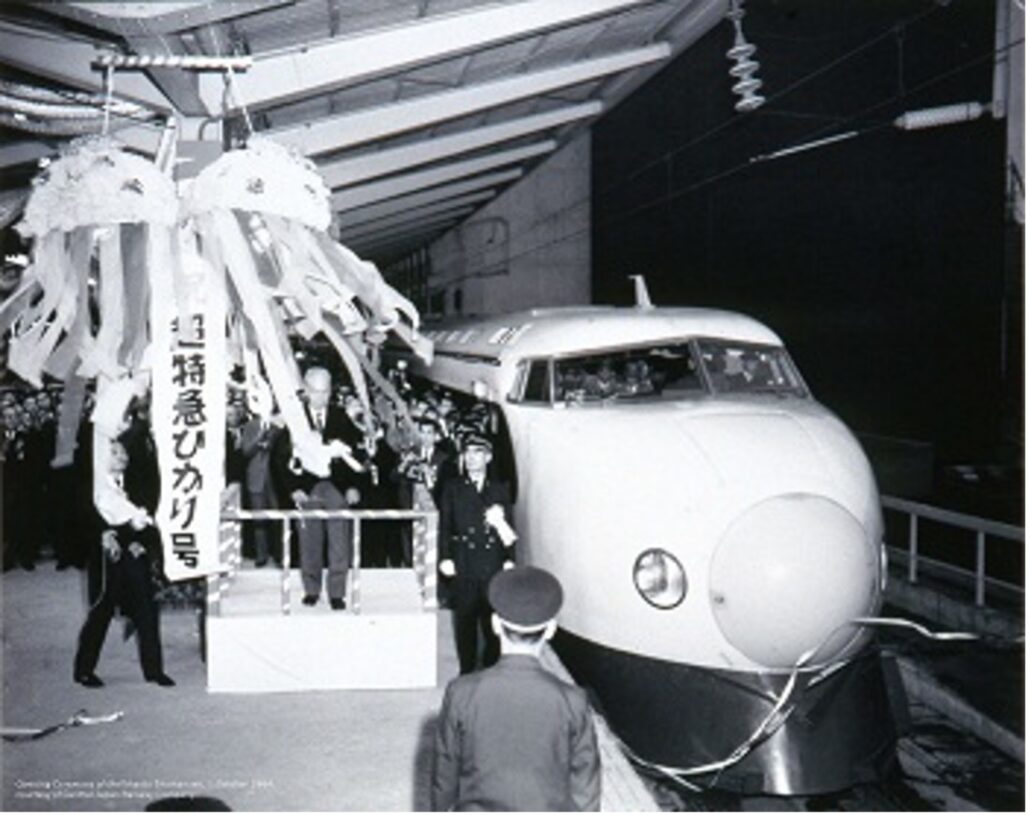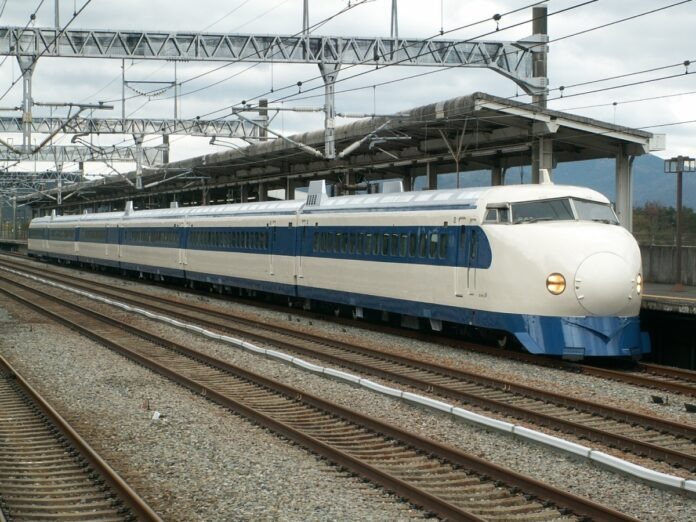“Talking Transportation”
By Jim Cameron
President
CAMERON COMMUNICATIONS INC
Author: “Off The Record: Confessions of a Media Consultant“
Happy 60th birthday to high speed rail. It was on October 1st in 1964 that the Shinkansen, Japan’s revolutionary super-fast train, made its debut.

Known as the “bullet train” because of its aerodynamic shape, the Shinkansen (which translates as “new trunk line”) made the run from Tokyo to Osaka in 4 hours and 40 minutes compared to the conventional trains, which took two hours longer.

Today, with the evolution of Japanese rail technology, the run now takes just 2 ½ hours, averaging about 200 mph. In peak hours the trains leave every three to five minutes, each carrying up to 1300 passengers.
In contrast, Amtrak’s fastest train, Acela, runs once an hour carrying a maximum of 304 passengers at an average speed (including station stops) of about 80 mph. By the way, Acela may be the fastest train in the US but it’s not true high speed rail (defined as 155 mph or faster and running on dedicated tracks).
How did Japan beat the world to this concept? Out of necessity.
After World War II, Japan experienced rapid economic recovery and growth. Urbanization increased dramatically, and major cities like Tokyo and Osaka became densely populated. There was an obvious need for faster and more efficient transportation to connect these urban hubs, especially along the Tōkaidō corridor, which was Japan’s busiest route.
Before the Shinkansen, conventional rail lines in Japan were heavily congested, especially between Tokyo and Osaka. The existing trains were slow, operated on narrow gauge tracks and couldn’t meet the growing demand for travel, both for business and leisure. Building a high-speed rail system would relieve this congestion and shorten travel times.
Japan also wanted to demonstrate its technological innovation and engineering prowess to the world, especially in the lead-up to the 1964 Tokyo Olympics. The Shinkansen became a symbol of Japan’s post-war recovery, showcasing cutting-edge technology in transportation and helping to raise its profile on the global stage.
Today there are over 1800 miles of high speed rail in Japan annually carrying 353 million riders, and they are already building a $64 billion maglev version that can go 314 mph. It should be ready by 2034.
Japan Rail (JR) had hoped to export its expertise to other countries but only Taiwan adopted the technology and only in a limited fashion.
France quickly followed with its TGV, la Train a Grande Vitesse (high speed train) introducing its first service in 1981 running between Paris and Lyon. Today there are over 1700 miles of TGV service in France.
Italy, Germany, Spain, Russia and even Morocco operate high speed rail. But it is China that has the most extensive network covering 28,000 miles of tracks. The line from Beijing to Hong Kong alone runs 1400 miles and, despite its speeds averaging 217 mph, takes 8.5 hours to complete its journey. There’s even an overnight high speed train with sleeping cars.
In the US there’s a high speed rail project being built in California between LA and San Francisco and another line from LA to Las Vegas (Brightline West)… so we’re still playing catch-up.
Jim Cameron is founder of the Commuter Action Group and advocates for Connecticut rail riders. His weekly column “Talking Transportation” is archived here. You can contact Jim at CommuterActionGroup@gmail.com.

